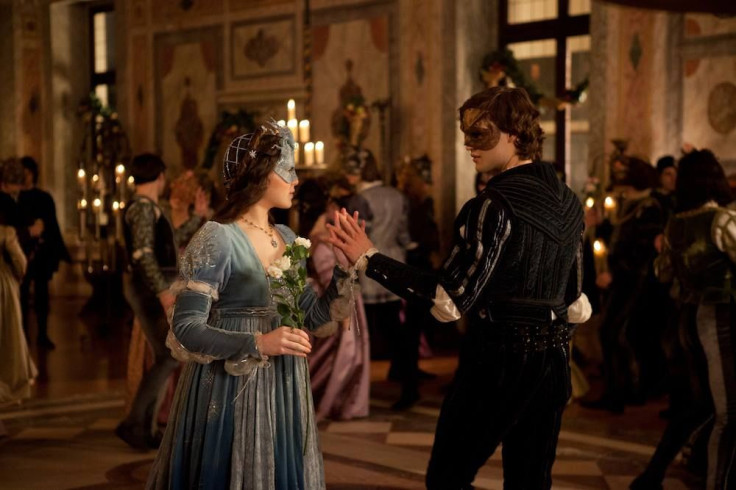On This Day: Shakespeare's 'Romeo And Juliet' Was First Performed
KEY POINTS
- Shakespeare's "Romeo and Juliet" is believed by some to have been performed for the first time on Jan. 29, 1595
- The play was thought to have premiered at the Curtain Theater in London
- The title page of the 1597 edition of "Romeo and Juliet" appeared to reveal that the play immediately gained popularity
Shakespeare's "Romeo and Juliet" remains a strong influence in literature and popular culture, and the tragic tale is still viewed by many as one of the greatest love stories of all time.
The archetypal story of two star-crossed lovers, written sometime between 1591 and 1596, is thought by some to have been performed for the first time almost 500 years ago on Jan. 29, 1595. There is no surviving record of the first-ever performance of "Romeo and Juliet," but experts believe it had likely been performed by 1597, when the first quarto was published, according to The British Library.
The play is believed to have premiered in a polygonal-shaped London theater called the Curtain Theater, which was home to Shakespeare's Company, the Lord Chamberlain's Men, from 1597 until The Globe opened two years later, BBC reported. Shakespeare's "Henry V" was also thought to have been performed for the first time at The Curtain.
Royal Shakespeare Company (RSC) noted that the title page of the 1597 edition of "Romeo and Juliet" revealed that it immediately gained popularity. "...it hath been often (with great applause) plaid publiquely," the page read.
"Shakespeare designed it to be played in daylight on the simple thrust stage of an Elizabethan playhouse, where the rear balcony provided Juliet's bedroom window and a trapdoor in the stage was her tomb," RSC wrote on its website of "Romeo and Juliet's" stage history. "No scenery and few props allowed the action to move swiftly and the audience to focus on the language. Music and costume added to the effect."
According to the theater company, "gifted boy players" took on the female roles, including Juliet. Comedian Will Kemp played Peter, the Nurse's comic servant, while Romeo is believed to have been played by Richard Burbage, who is described by RSC as an "expert wielder of both sword and poetry."
Chris Thomas of the Museum of London, one of the archeologists who discovered the remains of the Curtain Theater in 2012, believes Shakespeare's audience in the venue at the time was likely mostly made up of regular people rather than the wealthy.
"It's probably not something for the elite. I think we've probably got to imagine that the productions were a bit more rowdy and the audience probably participated quite a lot more than they do in modern theatrical productions," Thomas told NPR.

"Romeo and Juliet" is set in Verona, Italy, where the Montague and Capulet families are at war. Romeo and Juliet meet and fall instantly in love at a masked ball of the Capulets, but knowing that their families are sworn enemies, they decide to get married in secret.
But after Romeo kills Juliet's cousin in a duel, he is forced to leave her or risk being put to death. When her father arranges a marriage with Count Paris, Juliet asks for help from Friar Laurence, who gives her a sleeping potion to make her appear dead. But Romeo, thinking she had died, kills himself, leading to Juliet also taking her own life.
The appeal that has made "Romeo and Juliet" a favorite across generations stems from the various themes that it tackles. The universal familiarity that love and hate bring is discussed in Shakespeare's play so exquisitely that it has withstood the test of time and has outlived other pieces of literature that deal with the same motifs.
© Copyright IBTimes 2024. All rights reserved.





















